Don’t Have a Green Thumb? This is Your Guide to Houseplants That Actually Forgive You
I’ve been around plants my whole life, from massive commercial greenhouses to coaching nervous new plant parents. And the one thing I hear over and over is, “I’m cursed. I kill every plant I touch.” I get it, but honestly, that feeling usually comes from a simple misunderstanding. The goal isn’t to find some magical, unkillable plant. It’s about picking one that can handle a few mistakes while you’re figuring things out. A forgiving plant is a great communicator—it’ll show you what it needs without dying on you overnight if you miss a signal.
In this article
So, this isn’t just another list. We’re going to get into how these plants actually work, so you can work with them. We’ll cover the big three—light, water, and soil—and I’ll share the same core techniques I teach every new hire. The idea is to give you the confidence that comes from knowing what you’re doing. You absolutely can have a home full of gorgeous, healthy plants.
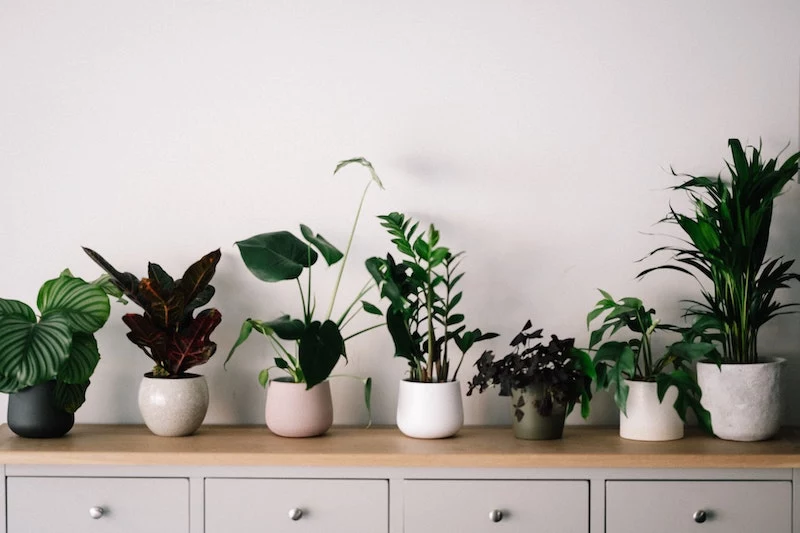
First Things First: Understanding Your Plant’s World
Before you even think about which plant to buy, you need to understand the mini-ecosystem of your home. Getting the light, water, and soil right is more than half the battle. Seriously.
Light Isn’t Decoration, It’s Food
Plants literally eat sunlight. It’s a process called photosynthesis, where they turn light, water, and air into sugar—their food. This is why a “low light” plant in a windowless bathroom isn’t going to make it. It’s not living; it’s just starving very, very slowly.
Think of light in your home like this:
- Direct Light: This is the intense, full-on sun you’d find right in a south-facing window. It’s like a spotlight that can easily scorch the leaves of most common houseplants. We’ll be avoiding this for the most part.
- Bright, Indirect Light: The holy grail for most indoor plants. Imagine a room that’s super bright all day, but the sun’s rays never bake the plant directly. This is usually a few feet back from a sunny window or right in an east-facing one that gets gentle morning sun.
- Medium Light: Deeper into a room, maybe near a north-facing window. The plant can see a good chunk of sky but gets no direct sun. A lot of the plants we’ll talk about are perfectly happy here.
- Low Light: The tough spots. The far corner of a room or a hallway with a small window. Forgiving plants might tolerate this, but their growth will be incredibly slow. They’re surviving, not thriving.
Getting the placement right from day one is the most important decision you’ll make for your new plant friend.
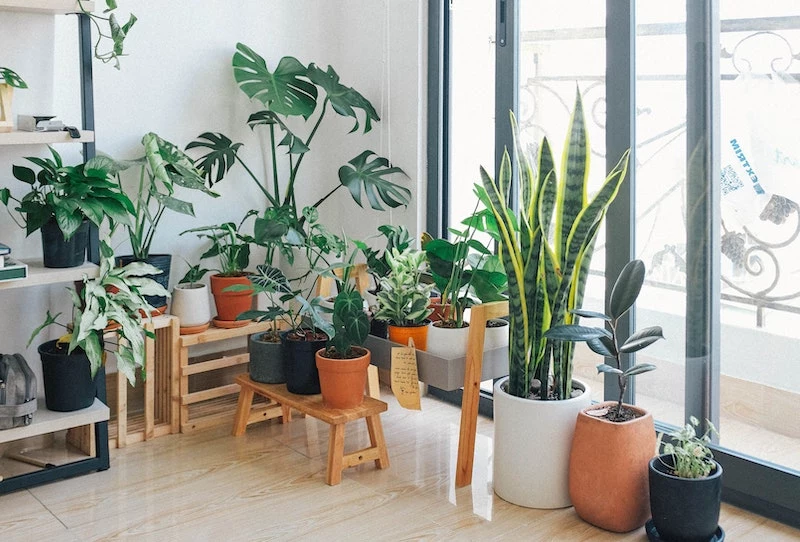
Water: The Fine Line Between Life and Drowning
Let’s be clear: overwatering is the #1 killer of houseplants. I’ve seen it more times than I can count. When you water, you’re filling up tiny air pockets in the soil. But here’s the thing—roots need to breathe oxygen from those pockets. If the soil stays soaked, the roots can’t breathe. They suffocate, die, and start to rot. That’s root rot, and it’s a nightmare.
The trick is letting the soil dry out to the right level for your specific plant. And that brings us to the pot. A pot without a drainage hole is a death trap. I tell everyone this: if a pot has no hole, it’s a decoration, not a home for a plant. All that excess water just pools at the bottom and creates a swampy mess that drowns the roots. No exceptions!
Getting Your Hands Dirty: The Only Skills You Really Need
You don’t need a bunch of fancy gear to be a great plant parent. You just need a few foundational skills. Master these, and you’re golden.
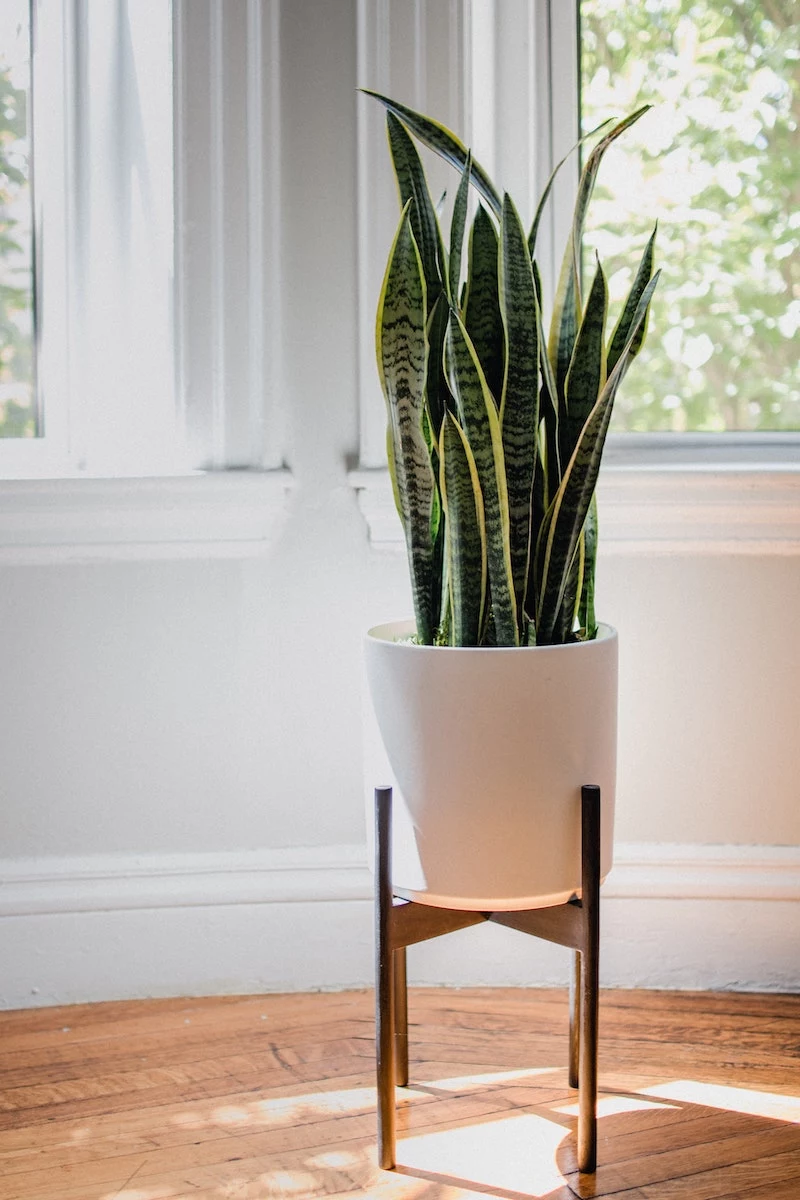
The Right Way to Water
Forget moisture meters. Your most reliable tool is your finger. Seriously, just stick your index finger into the soil up to your second knuckle. Does it feel damp? Hold off on watering. Does it feel dry? It’s probably time for a drink. For desert-lovers like succulents and snake plants, you want it to feel bone dry.
When you do water, do it thoroughly. Take the plant to a sink or tub and give the soil a good soak until you see plenty of water running out the drainage hole. This ensures all the roots get wet and, as a bonus, it flushes out mineral buildup from your tap water. Let it drain for a good 15 minutes before putting it back in its decorative saucer. Never, ever let a plant sit in a puddle of water.
By the way, bottom watering is another fantastic method, especially if you’re a bit heavy-handed. Just place the pot in a bowl of water and let it sit for about 30-60 minutes. The soil will soak up exactly what it needs from the bottom. This encourages strong, deep roots.
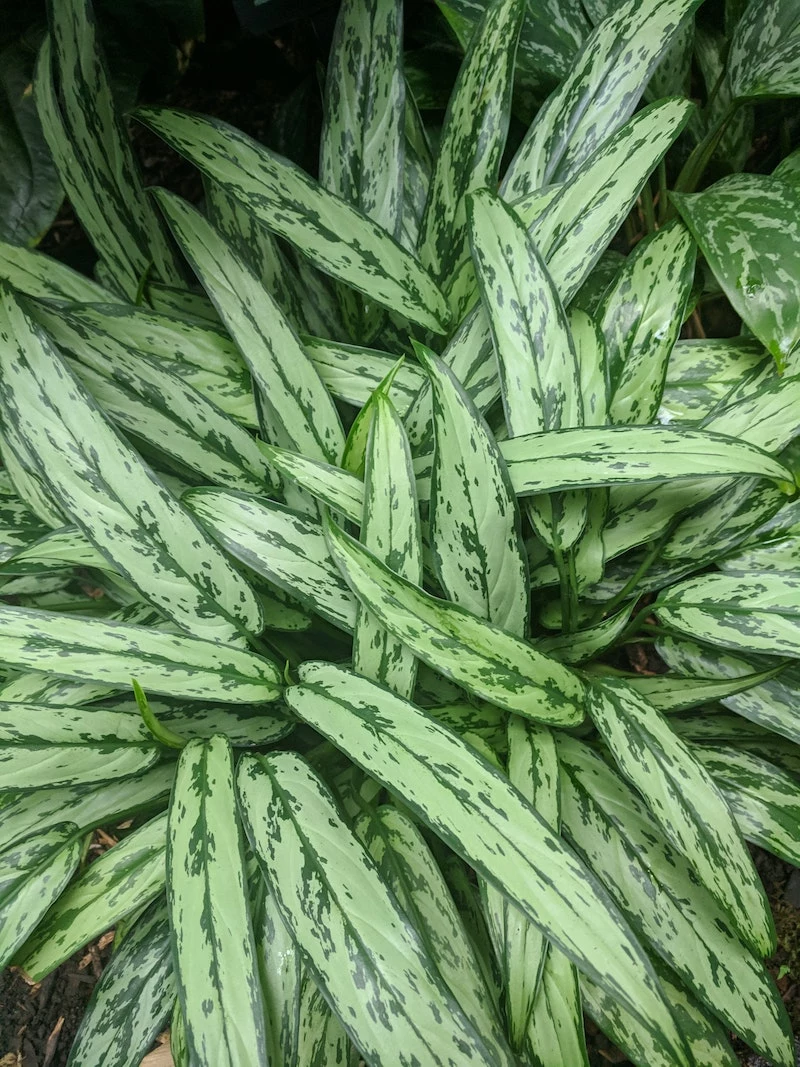
Choosing Your Pot and Soil (and a Quick Shopping List!)
The pot you pick has a huge impact on your watering routine.
- Terracotta (the classic orange clay pots): These are porous, meaning they breathe. This helps the soil dry out faster, which is a lifesaver for plants that hate wet feet (and for people who tend to overwater). I use these all the time. A decent 6-inch pot will only set you back about $5-$15.
- Glazed Ceramic or Plastic: These don’t breathe, so they hold moisture for much longer. They’re fine, but you have to be extra careful to check the soil before watering again.
For soil, please don’t just scoop up dirt from your yard. It’s too heavy, drains poorly, and is often full of pests. A quality all-purpose indoor potting mix is your starting point. You can grab a small bag for about $5-$8. But here’s a pro tip: make it even better. For most of the plants on our list, I use a simple recipe: two parts potting mix to one part perlite. Perlite looks like little white Styrofoam bits and you can get a bag for $5-$8. It doesn’t add nutrients; it just creates air pockets for happy, healthy roots.
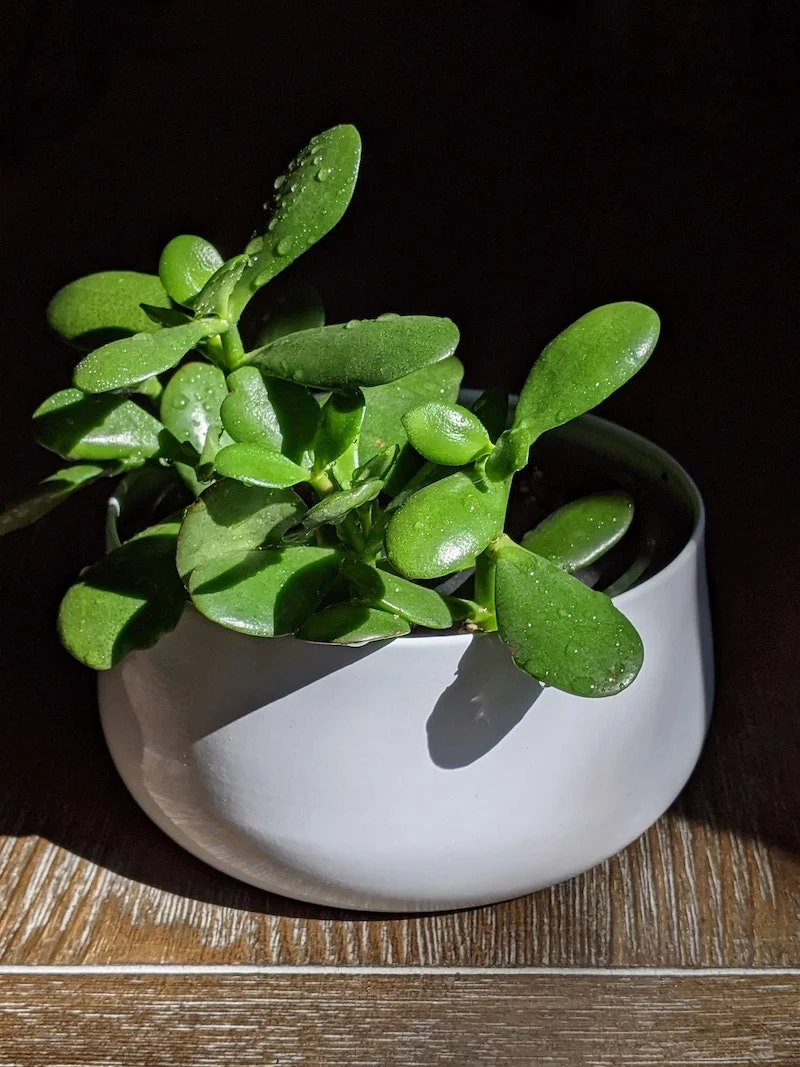
Quick tip: Grab a bucket or a big bowl you don’t mind getting dirty. Dump your soil and perlite in and mix it all up with your hands until the little white bits are evenly spread out. It’s messy, but it’s the best way to get that perfect, airy blend.
See? Getting started is totally doable. A plant, a pot, soil, and perlite… you can get everything you need to start for under $50.
Which Plant is Right for You? A Quick Guide
Before we dive deep, let’s figure out what you’re looking for. You don’t want to read all the details only to find out the plant is toxic to your cat, right?
- Worried about pets? The Spider Plant is your hero. It’s completely non-toxic and a fantastic choice for homes with curious cats or dogs. Most of the others on this list are mildly to moderately toxic, so they’re best kept out of reach.
- Working with low light? If you have a darker apartment or a corner that needs some life, the ZZ Plant and the Snake Plant are absolute champions. They tolerate low light better than almost anything else. The Chinese Evergreen is also a solid choice for those medium-to-low light spots.
- Tend to forget to water? The ZZ Plant and the Snake Plant will barely notice you’re gone for a few weeks. Their ability to store water is legendary. The Jade Plant is also great with neglect, as long as it gets enough sun.
- Tend to overwater? You’re not alone! A Snake Plant or Jade Plant in a terracotta pot is your best bet. The pot will help wick away that extra moisture and give you a bigger margin for error.
- Want something that grows fast? The Pothos is your plant. It’s a vining plant that will give you that trailing look pretty quickly and provides great visual feedback when it’s thirsty.
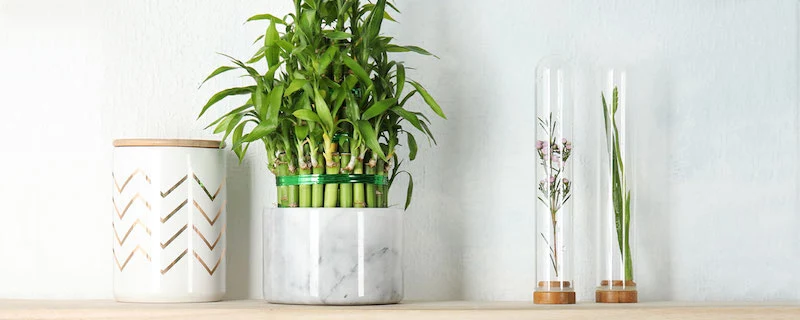
Meet Your New Friends: 6 Seriously Forgiving Houseplants
Here are the plants I’ve seen succeed time and time again in real homes and offices. They’re tough, beautiful, and great teachers.
1. Snake Plant
This one is the absolute champion of tolerance. A lot of old-school growers still call it by its old name, Sansevieria. It’s got a modern, architectural look that fits anywhere.
- Why It’s Forgiving: It’s a type of succulent. Those thick, waxy leaves are basically water tanks, so it can go ages without a drink. It’s built for survival.
- Light: Prefers bright, indirect light but will put up with low light like a champ. In better light, you’ll see faster growth and better color.
- Watering: This is key. Let the soil dry out completely between waterings. In an average spot, this might be once every 4 to 8 weeks. Less in winter. The pot will feel surprisingly lightweight when it’s ready.
- Soil: Needs to drain fast. A 50/50 mix of cactus soil and perlite is perfect.
- Growth & Price: A slow grower, it can eventually reach a few feet tall. You can find small ones for around $15-$30 at places like Home Depot, Lowe’s, or a local nursery.
- Heads up! The only real way to kill it is by overwatering. If the leaves get soft and mushy at the base, you’ve got root rot. It’s also mildly toxic to pets if they chew on it, so keep it away from nibblers.
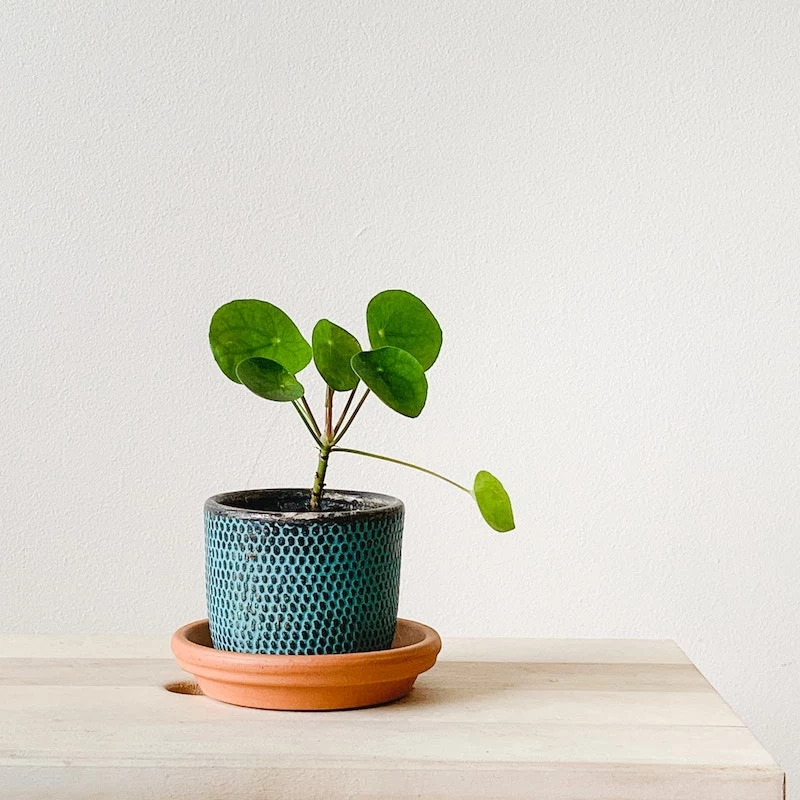
2. ZZ Plant
A close second in the toughness department. It looks super stylish and asks for almost nothing in return.
- Why It’s Forgiving: Its secret is underground. The ZZ Plant grows from big, potato-like rhizomes that store a massive amount of water. This is why it can survive for weeks, even months, if you forget about it.
- Light: Does great in medium to low indirect light. I’ve even seen them thrive in offices with only fluorescent lights. Just keep it out of direct sun, which will burn it.
- Watering: Just like the snake plant, let the soil dry out completely. Water it well, then forget about it for at least a month.
- Soil: A standard, well-draining potting mix is fine. Adding extra perlite never hurts.
- Growth & Price: A slow to moderate grower that can get 2-3 feet tall and wide. Prices are similar to the snake plant, typically $20-$40 for a decent-sized one.
- Heads up! Yellowing leaves can mean two things. If a whole stalk is yellow and mushy, it’s overwatered. If just a few lower leaves turn yellow and drop off while new growth is coming in, that’s just normal aging. Important: All parts of the plant are toxic if ingested by pets or humans.
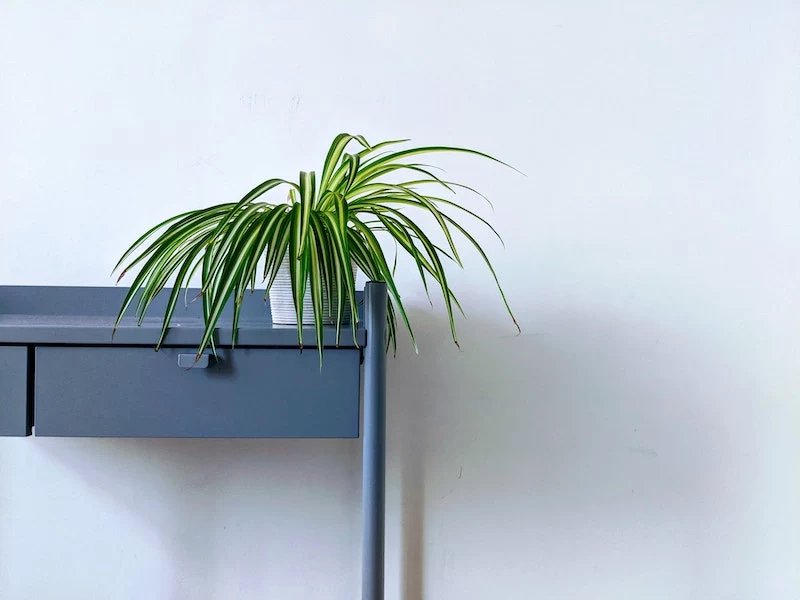
3. Pothos (or Devil’s Ivy)
This is the classic trailing plant for beginners. It grows fast and practically shouts its needs at you.
- Why It’s Forgiving: It’s the most dramatic plant I know, in a good way. When it’s thirsty, its leaves will visibly droop and look totally sad and floppy. A few hours after you water it, they’ll perk right back up. It’s like magic and a great lesson in listening to your plants.
- Light: Loves medium to bright, indirect light. In lower light, the fun variegated patterns might fade to solid green, and it can get a bit leggy.
- Watering: Water when the top inch or two of soil is dry, or when you see that first sign of a slight droop.
- Soil: A standard all-purpose potting mix is perfect.
- Growth & Price: This one is a fast grower! The vines can easily grow several feet in a year. They are also super affordable, often just $10-$20 for a nice hanging basket.
- Heads up! Pothos is toxic to cats and dogs, so keep those trailing vines out of reach.
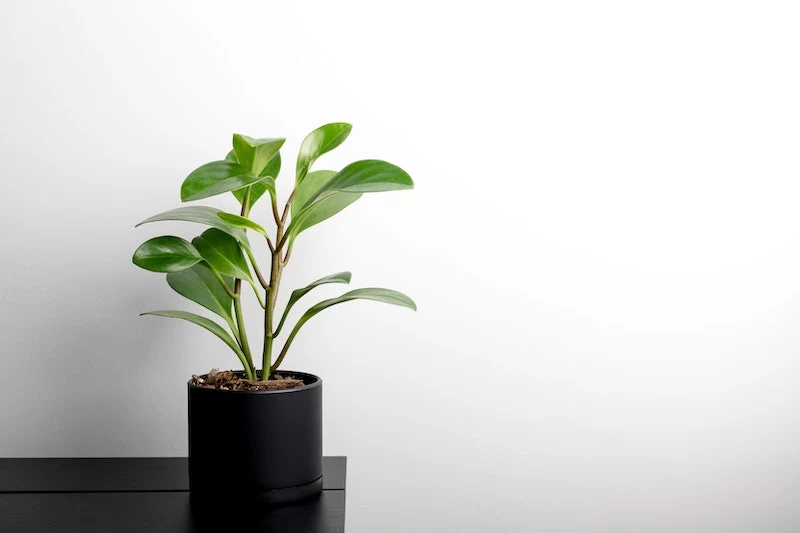
4. Spider Plant
A retro classic for a reason! It’s super resilient and makes baby plants, called “spiderettes,” that are fun to share.
- Why It’s Forgiving: It has thick, fleshy roots that store water, giving it a buffer if you forget to water for a bit.
- Light: Prefers bright, indirect light. Too much direct sun will scorch the leaves. It’ll survive in lower light but probably won’t produce any babies.
- Watering: Water thoroughly when the top half of the soil feels dry.
- Soil: Standard potting mix is all it needs.
- Growth & Price: A moderate grower, the main plant can get about 1-2 feet wide, with babies hanging down further. It’s another budget-friendly pick, usually $15-$25.
- Good to know: Brown leaf tips are common and often caused by minerals in tap water. If it bothers you, try using filtered water or letting your tap water sit out overnight before using it. Best of all? It’s non-toxic to cats and dogs!
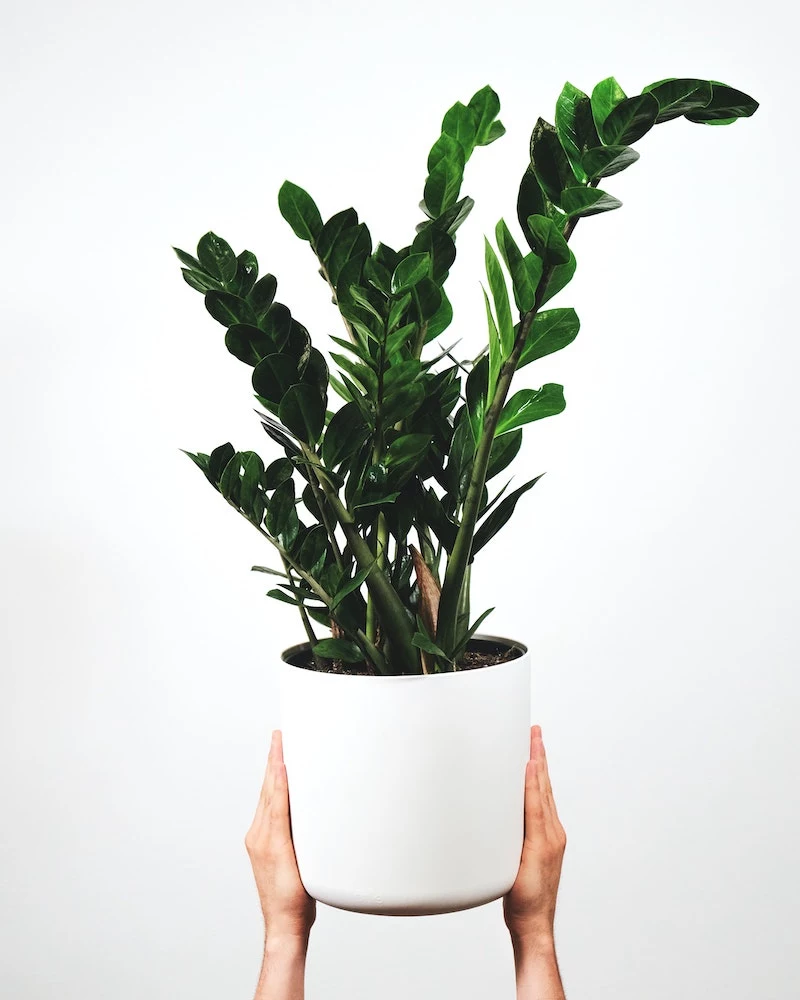
5. Chinese Evergreen
A beautiful foliage plant that comes in stunning patterns of green, silver, pink, and red. They are famous for handling lower light with style.
- Why It’s Forgiving: Their main superpower is handling low-light conditions. Their root systems are pretty sturdy, as long as you don’t let them sit in a puddle.
- Light: The stars of medium to low light. The darker green types can handle dimmer spots than the colorful pink or red ones. Keep all of them out of direct sun.
- Watering: Let the top 50% of the soil dry out before watering. A quick tip: they don’t like being cold and wet, so try to use room-temperature water.
- Soil: Standard potting mix is fine. They enjoy a bit of humidity, so they’re great for bathrooms or kitchens.
- Growth & Price: Slow to moderate growers, they’ll stay compact, usually under 2 feet tall. The more colorful varieties can be a bit pricier, from $20 to $50.
- Heads up! Like Pothos and ZZ Plants, these are toxic to pets.
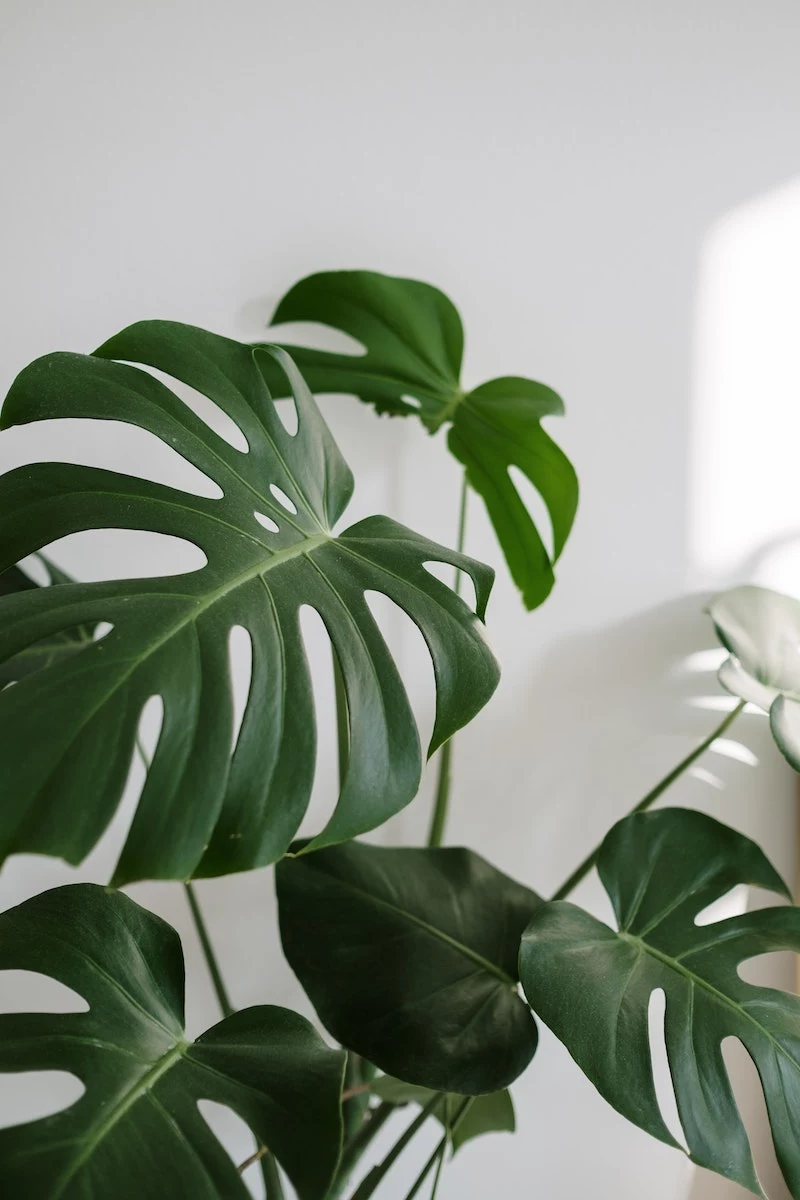
6. Jade Plant
A classic succulent that can live for decades and become a family heirloom if you treat it right.
- Why It’s Forgiving: As a succulent, its chubby leaves and thick stems are built to store water. It loves a routine of being left to get bone dry, then getting a deep drink.
- Light: Jade plants need a good amount of light. A spot with a few hours of direct morning sun or bright, indirect light all day is perfect. In low light, they get weak and stretchy.
- Watering: This is where most people go wrong. The soil MUST dry out completely. Your best guide is the leaves. When they are plump and firm, it’s happy. When they feel a little soft or wrinkled, it’s time to water thoroughly.
- Soil: A fast-draining cactus and succulent mix is non-negotiable.
- Growth & Price: A very slow grower that can eventually look like a miniature tree. Small plants are cheap, often under $15.
- Heads up! Dropping leaves often means it’s too dry. Soft, mushy stems mean it’s too wet, which is usually a fatal case of root rot. It is also toxic to pets.
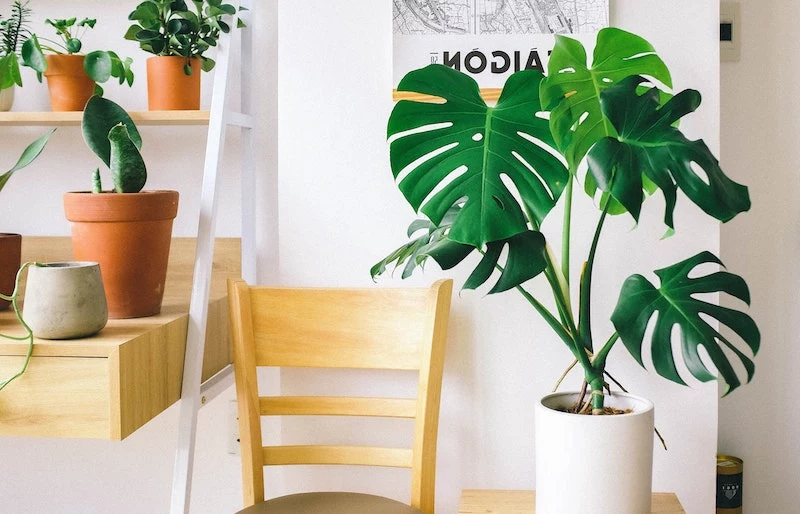
Plant CPR: What to Do When Things Go Sideways
Even with easy plants, stuff happens. Knowing how to troubleshoot is the real skill.
The Overwatering Emergency Room
So your plant is limp, yellow, and the soil is soaked. Don’t panic. Here’s the emergency procedure:
- Gently slide the plant out of its pot.
- Look at the roots. Healthy roots are firm and white or tan. Rotted roots are brown, black, and mushy—and they often smell bad.
- Get some clean scissors and trim off every single mushy root. Be ruthless. Any rot left behind will just spread.
- Repot the plant in fresh, dry, well-draining soil. You might need a smaller pot if you removed a lot of roots.
- And this is the most important step: I know it feels wrong, but DO NOT water it. This is maybe the only time you’ll pot a plant without watering it right away. The cut roots need a few days to heal over first.
- Put the plant in gentle light while it recovers. It’s in shock.
This doesn’t have a 100% success rate, but it gives the plant its best fighting chance.
Dealing With Pests
It happens. The most common indoor culprits are fungus gnats, spider mites, and mealybugs.
- Fungus Gnats: Annoying little black flies buzzing around the soil. The adults are harmless, but their larvae in wet soil can damage roots. Letting the top layer of soil dry out is your best defense. Yellow sticky traps work great to catch the adults.
- Spider Mites: You’ll probably see their fine webbing before you see them. They cause tiny yellow speckles on leaves. Isolate the plant and wipe the leaves down with a damp cloth. For a bigger problem, try a simple insecticidal spray: mix 1 teaspoon of mild dish soap (nothing with degreasers or bleach) in 1 liter of water.
- Mealybugs: Look like tiny bits of white cotton, hiding where leaves meet stems. My go-to method is to dip a cotton swab in rubbing alcohol and dab each one directly. For a bad infestation, a commercial insecticidal soap or neem oil spray is the next step.
A Final Thought…
Bringing a plant into your home is a small commitment to another living thing. And part of that is making sure it’s safe for everyone else in your house. Before you buy, please, do a quick online search for the “ASPCA toxic plant list.” It’s the best resource out there for checking if a plant is safe for your furry friends.
Success is just a journey of small steps. Start with one plant. Learn its rhythm. Touch the soil. Look at the leaves. Don’t be afraid of a yellow leaf or a small setback. Every single experienced plant person has a graveyard of plants they’ve lost along the way. Those weren’t failures; they were lessons. You’ve got this.
Inspirational Gallery
The Golden Rule of Repotting: Wait. It’s tempting to give your new plant a beautiful pot the second you get it home, but resist the urge. Plants experience shock when they move from a greenhouse to a store, and then to your home. Give your new green friend at least two to four weeks to acclimate to your home’s unique light and humidity before introducing the stress of repotting. This patience prevents leaf drop and lets the plant settle in smoothly.
A 2015 study published in the Journal of Physiological Anthropology found that active interaction with indoor plants can reduce physiological and psychological stress by suppressing sympathetic nervous system activity.
Beyond aesthetics, this is the real magic of starting your plant journey. The simple, mindful act of checking the soil or wiping down a leaf isn’t just a chore; it’s a proven way to connect with nature and calm your mind, even in a small apartment.
How do I know when it’s actually time to water?
Forget a strict schedule. The most reliable method is the ‘chopstick test.’ Gently push a wooden chopstick or skewer deep into the soil, avoiding the main roots. Pull it out. If it comes out clean and dry, it’s time to water. If it has moist soil clinging to it, wait a few more days. This technique directly measures the moisture where it matters most—at the root level—and is a foolproof way to avoid the number one beginner mistake: overwatering.
Terracotta Pots: These classic, porous clay pots allow air and water to move through the sides, helping the soil dry out faster. They are perfect for forgiving plants that hate ‘wet feet,’ like Snake Plants, ZZ Plants, and succulents.
Glazed Ceramic or Plastic Pots: These are non-porous and retain moisture for much longer. They work well for plants that prefer more consistent moisture, like a Pothos or a Spider Plant, but require a more careful watering hand.
Your choice of pot is an active part of your plant care system, not just decoration.
- Create visual interest with varied heights.
- Combine different leaf textures and shapes.
- Anchor the arrangement with a larger pot.
The secret? The ‘Thriller, Filler, Spiller’ design method. Start with a tall, upright plant (the ‘thriller,’ like a Sansevieria laurentii), add a bushy mid-height plant (the ‘filler,’ like a ZZ Plant), and finish with a trailing plant that cascades over the edge (the ‘spiller,’ like a Golden Pothos). Grouping them creates a lush, intentional look.
Worried about pests? The most common nuisance for beginners is the tiny, annoying fungus gnat. They thrive in consistently moist soil. The easiest, gentlest solution involves three steps:
- Let the top two inches of soil dry out completely between waterings.
- Place yellow sticky traps near the pot to catch the flying adults.
- Water with a solution containing BTI (a natural bacteria), found in products like Mosquito Bits, to safely eliminate the larvae in the soil.
The Sansevieria family, or Snake Plants, includes over 70 species, with new cultivars appearing constantly.
While the classic striped ‘Laurentii’ is a fantastic start, exploring other varieties adds instant collector’s appeal without adding difficulty. Look for the architectural, cylindrical ‘Sansevieria cylindrica’ or the compact, bird’s nest-like ‘Sansevieria hahnii’. They all share the same legendary resilience.
Want to level up your plant care without complexity? Try a custom soil mix. Many forgiving houseplants are aroids that love to climb trees in the wild, meaning their roots crave air. Giving them an airy, chunky mix is a huge step toward preventing root rot. It’s surprisingly easy to make.
- One part standard indoor potting mix.
- One part perlite for aeration.
- One part orchid bark (brands like Better-Gro are great) for chunkiness.
Just mix these three ingredients together for a superior blend that your Pothos, Monstera, or ZZ Plant will adore.










